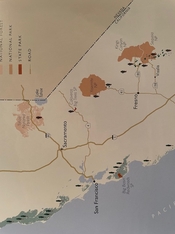Doremus Scudder
Member
Some random thoughts:
The Zone System is just one method of simplifying and applying sensitometery and tone reproduction so the non-scientist can use them effectively.
Fitting subject luminescence range to a paper grade/contrast setting by means of altering development time (after exposing "correctly," of course) and using Zones III and VIII as textured extremes is just one way to apply the ZS. That's the formula for "plain-vanilla," faithful-to-reality-rendered prints. Many like those.
With a thorough knowledge of the ZS and a bit of tone reproduction on the side, you can use the techniques for anything that the medium is capable of: underexposing and overdeveloping for that "pushed" look, increasing contrast for a graphic black-white representation without a lot of midtones, etc.., etc.
If you visualize something outside of the realistic rendering, the ZS can also be an effective tool.
"Expose for the shadows and develop for the highlights" needs to be modified to, "Expose for the shadows and develop or change print contrast for the highlights." Contrast control by means of altering development time is not the only tool in the toolbox and, especially in the case of contractions, often is not as good as other methods (SLIMT is my go-to for extreme contractions these days).
Planning print manipulations, including dodging, burning and bleaching can, and should, be incorporated into the visualization and into ZS methodology.
The Zone System is just one method of simplifying and applying sensitometery and tone reproduction so the non-scientist can use them effectively.
Fitting subject luminescence range to a paper grade/contrast setting by means of altering development time (after exposing "correctly," of course) and using Zones III and VIII as textured extremes is just one way to apply the ZS. That's the formula for "plain-vanilla," faithful-to-reality-rendered prints. Many like those.
With a thorough knowledge of the ZS and a bit of tone reproduction on the side, you can use the techniques for anything that the medium is capable of: underexposing and overdeveloping for that "pushed" look, increasing contrast for a graphic black-white representation without a lot of midtones, etc.., etc.
If you visualize something outside of the realistic rendering, the ZS can also be an effective tool.
"Expose for the shadows and develop for the highlights" needs to be modified to, "Expose for the shadows and develop or change print contrast for the highlights." Contrast control by means of altering development time is not the only tool in the toolbox and, especially in the case of contractions, often is not as good as other methods (SLIMT is my go-to for extreme contractions these days).
Planning print manipulations, including dodging, burning and bleaching can, and should, be incorporated into the visualization and into ZS methodology.









